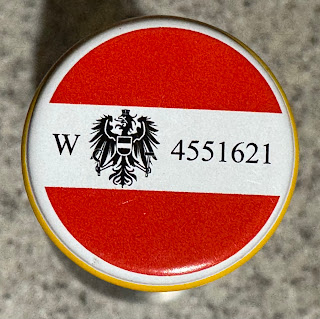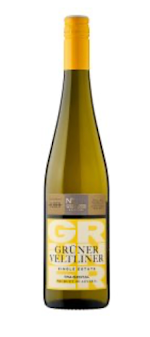Waitrose No.1 Grüner Veltliner Single Estate 2023, 12.5%. £12.99 (25% off, £8.99 until 11 Feb 2025)
As well as being the most planted white grape Grüner Veltliner in Austria it is the country's most important. It is also the most 'autochthonus' (i.e. a native variety that is the result of natural cross-breeding or mutation in a particular region). In the case of Grüner Veltliner scientists have defined it as a cross between the Traminer grape and a centuries old variety called St Georgen named after the place where it was discovered in the east of Austria. The No.1 in the listing marks it in the Waitrose range for products "which are too good just to save for a special occasion" that is gradually acquiring a number of prestige own-label wines. It is an unoaked, single estate, 100% Grüner Veltliner wine made exclusively for Waitrose by Markus Huber from the Traisental DAC in Lower Austria. DAC (Districtus Austriae Controllatus) refers to the Austrian Qualitätswein (Quality Wine) status, a guarantee that the wine has the unmistakable characteristics of a particular region. Typically Grüner Veltliner is described as having green apple flavours although I felt there was a noticeable touch of stone fruit too. All reviews recognise it as a light, clean and refreshing wine that is versatile for pairing with food. A review in Decanter magazine last year located it nicely as "Textbook Grüner" and awarded it 91/100, and consumer comments on the Waitrose website are peppered with glowing adjectives such as delightful, superb, and stunning.
If you are interested in comparing this bottle with other supermarket own-label GVs have a look at Sainsburys Grüner Veltliner Taste the Difference or Morrisons The Best Grüner Veltliner. They are also products from the Huber family winery. And there's a further GV in Waitrose too - Waitrose Blueprint Grüner Veltliner but it's a bit of a downgrade on the wine above and, for the moment at least, why bother when they cost the same (£9.99).
Lentsch Zweigelt 2021, 13.0%. £9.99 (Waitrose)
Waitrose also sells an attractive red wine from Austria made from the widely-planted Zweigelt grape. Unlike Grüner Veltliner this is NOT an autochthonous grape but a successful cross between Blaufränkisch and St Laurent created about 100 years ago by Prof Fritz Zweigelt The result is an easy drinking medium-bodied wine with bright acidity. It's another single varietal wine (100% Zweigelt) made by Seegut Lentsch, an ambitious family wine producer beside Lake Neusiedl southeast of Vienna and not far from the Hungarian border. I have to admit that it was the striking modern style red label on the shelf that initially caught my eye but I was quickly captivated by the fruity medium bodied wine within. It's definitely a good alternative to Beaujolais or a generic light Pinot Noir. The Decanter reviewer last year was impressed too by the wine's brightness and energy and went on to describe it's "vibrant cranberry fruit aromas ... with a hint of crunchy dried leaves, barnyard, dried mushroom and dried orange".




Comments
Post a Comment